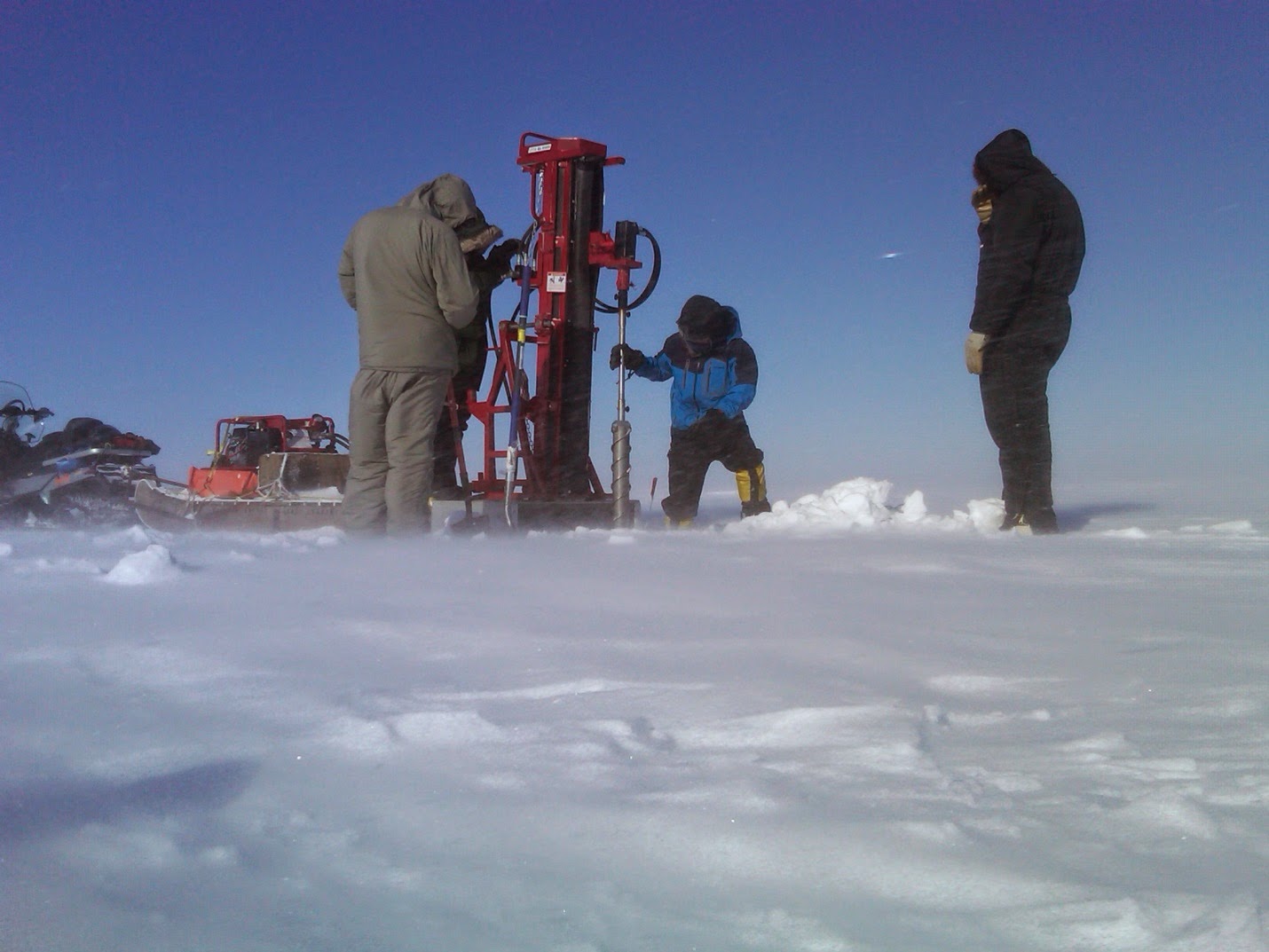This morning Baptiste and John mounted the two cameras into a plastic housing that will protect them once installed on the field tower. They also took time to program the data logger so that everything would work when taken to the field. One camera gathers spectra in the red, green, and blue (RGB) region, while the other collects images in the near-infrared region of the spectra. Both cameras are programmed to take pictures 2 to 4 times daily throughout the season, and they can be accessed remotely. The primary objective is to acquire visual images and spectral data during snowmelt and to associate spatial distribution of snow and water across the landscape with changes in subsurface properties determined simultaneously with the ERT. A secondary objective is to associate CO2 and CH4 fluxes measured with eddy covariance and with our CO2 and ET chambers to observed changes in inundation and vegetation phenology throughout the season.
It was a cold snow machine ride to our field site. John and Baptiste were able to mount and test the cameras in their planned configuration. After making few modifications tonight at the UMIAQ machine shop, everything should be on target for the final installation within the coming days.
Finally, and as mentioned earlier, the cameras are meant to provide an additional data stream that will help us interpret other types of plant, soil, and water measurements. These kinds of installations are increasingly being deployed in remote locations where people are not necessarily present every day in the field. It is nice that high-resolution data collected in space and time using a ground-based system can be used along with similar data gathered from UAVs, planes, and satellites. This will be helpful as these multi-scale data products are merged to derive a more complete understanding of processes at plot, landscape, and regional scales. We anticipate that NASA and their planned Arctic-Boreal Vulnerability Experiment (ABoVE) project (http://above.nasa.gov/) will be sponsored through Diane Wickland's Terrestrial Ecology Program and will ultimately become a valuable partner in this scaling endeavor.













































